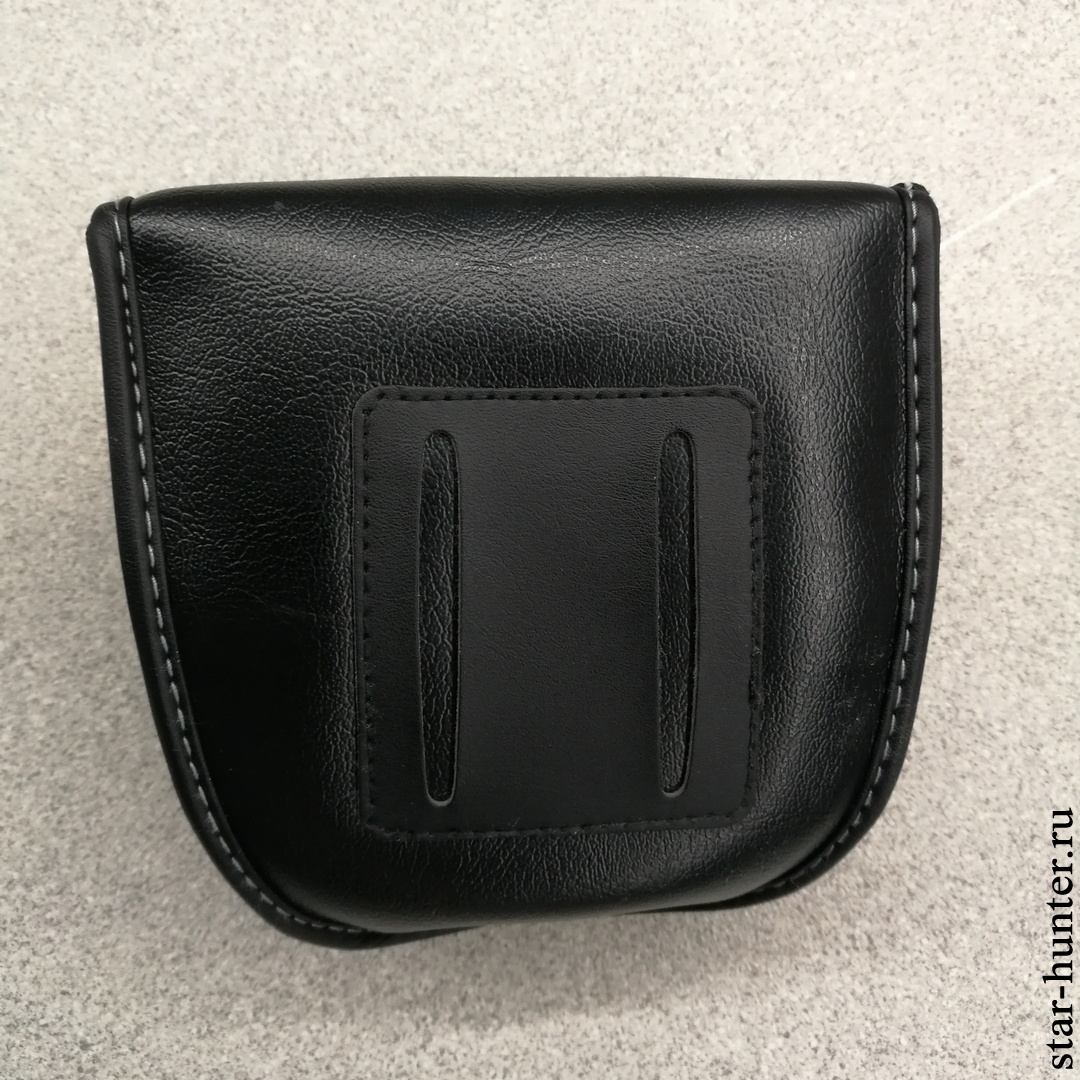Introduction
I received PENTAX UP 8-16×21 binoculars for testing. This is a lightweight and compact zoom binocular with a 21mm aperture and magnification from 8x to 16x. The eyepieces have an aspherical element to reduce distortion. The belt has a quick release design. In addition, the binoculars themselves are light and compact, and due to good ergonomics, the image is quite stable even when viewed from the hands.

Declared technical characteristics:
SKU: 61961
Type: binoculars with a central focusing mechanism and “porro”-prisms made of BaK4 glass
Objective lens: 2 elements in 1 group
Eyepiece lens constructions: 4 elements in 3 groups
Magnification: 8х-16x
Objective lens diameter: 21 mm
Linear field of view at 1000m: 87-52 m
Exit pupil: 2.6-1.3 mm
Eye relief: 14-11 mm
Relative brightness: 6.7 – 1.7
Diopter adjustment range: +/- 4 D
Minimum focusing distance: from 3 m to infinity
Eyepiece Ring: Helicoid Type
Height: 55 mm
Width: 111 mm
Depth: 111 mm
Weight: 310 g
Waterproof: no
Accessories: tripod adapter U (69552)
Prism coating: BaK4 (note: this is not a coating, but a prism material)
Lens coating: multilayer coating of all optical elements
Minimum focusing distance: 3 m
Angle of view actual: 5° – 3°
Twilight factor: 13.0-18.3
Interpupillary distance: 56 – 73.5 mm
Package and body
I got the binoculars without a box and a belt, only with a case (demo copy).
The body of the binoculars is made of durable plastic with rubber “armor”. At the bottom there is a thread for a 1/4″ tripod. The size of the binoculars, depending on the interpupillary distance, can vary from 109 x 110 x 52 mm to 109 x 93 x 64. The weight of the binoculars in a case without covers is 363.2 grams, the weight of the binoculars is 310.5 grams, case weight 52.7 grams.) Case made of synthetic leather, with a hole for a belt, size approx 134 x 130 x 67 mm.
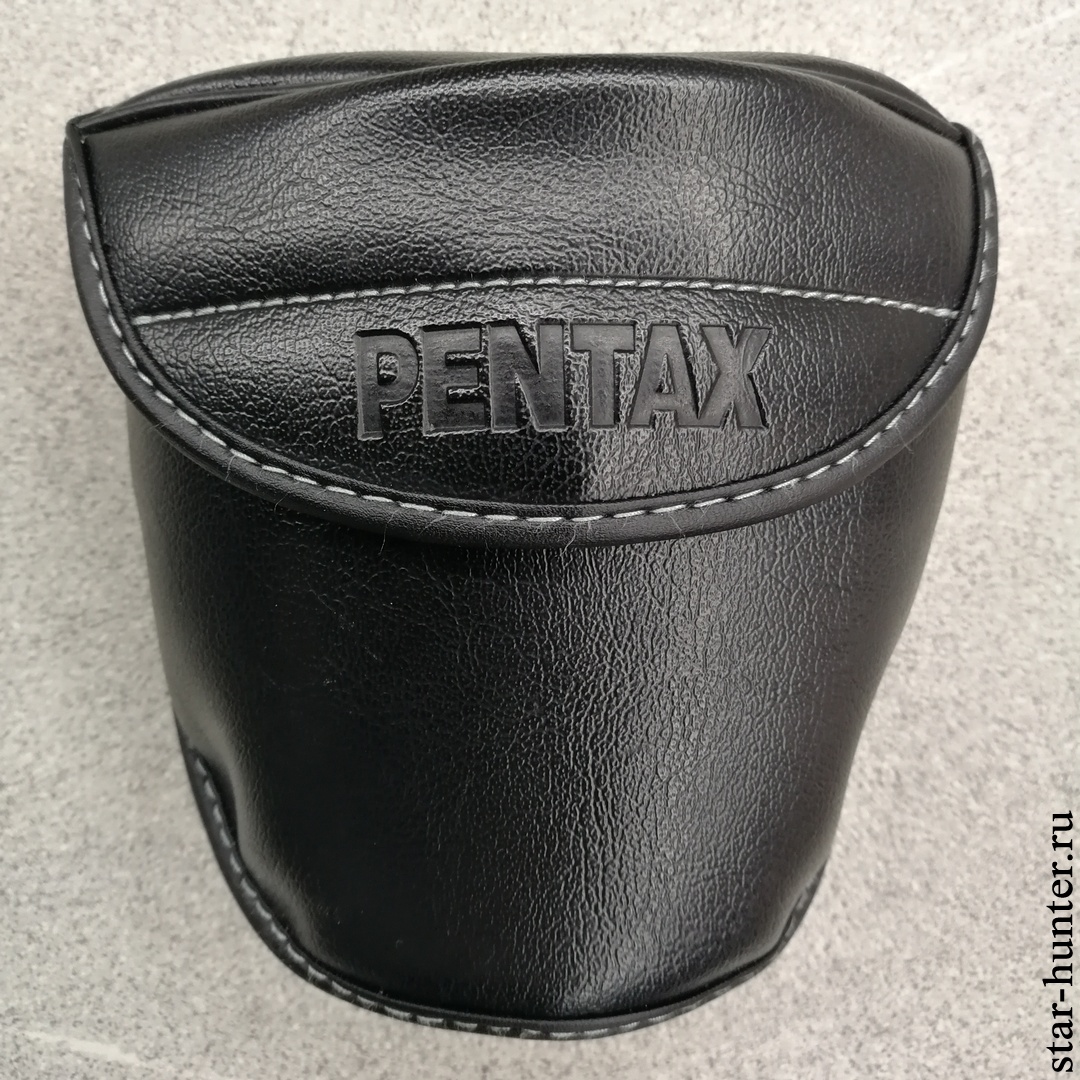

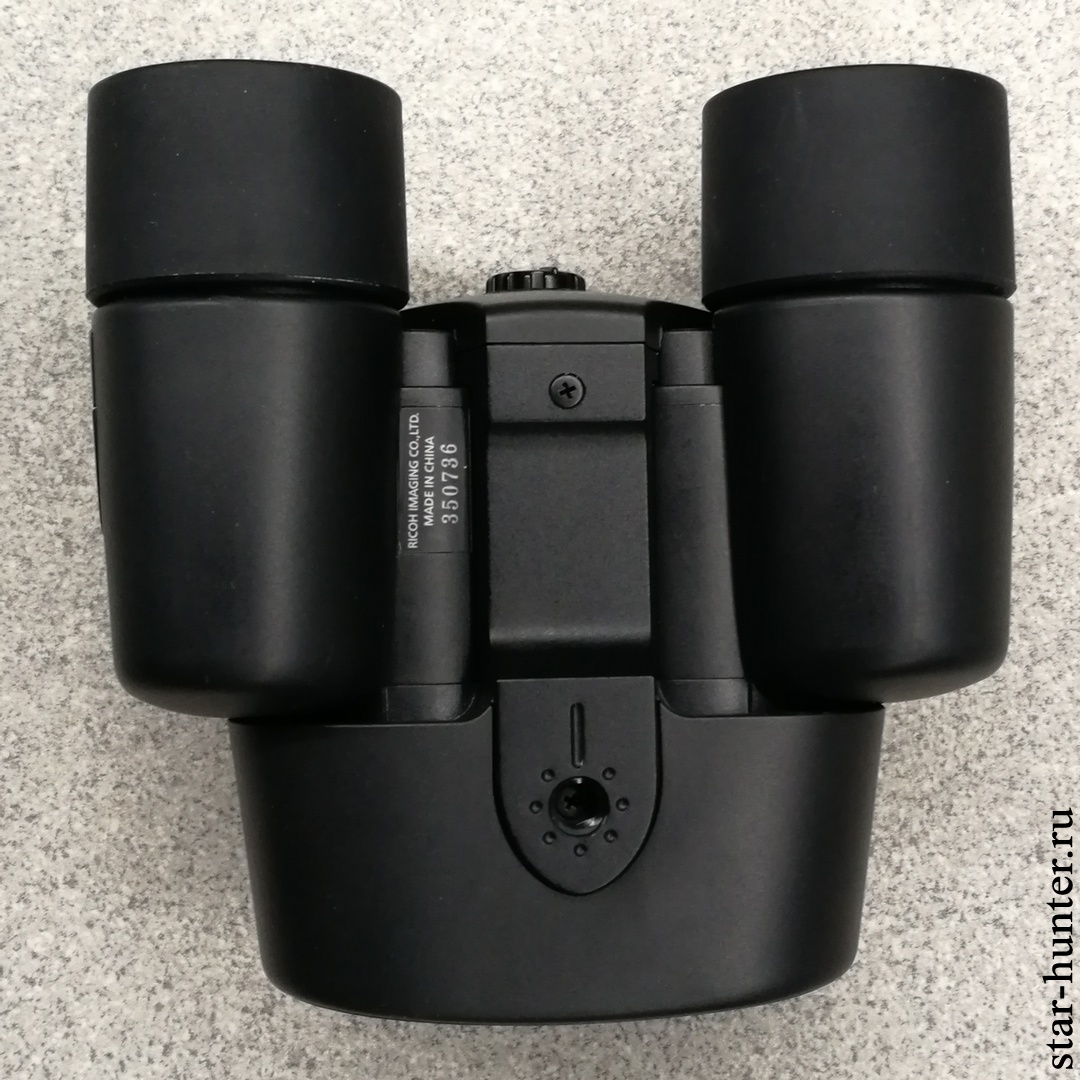
The binoculars are not waterproof, so you should not observe in the rain, fog up the optics, or drop it into water. Before bringing the binoculars from the cold into a warm room, I recommend that you close the eyepieces with caps and hide them in your own case or sealed bag. The binoculars should be protected from bumps, falls and mechanical damage – this applies to all binoculars in general.
Mechanics and focusing
The mechanism of changing the interpupillary distance is atypical – the lenses themselves remain motionless, the eyepieces with the prism block are shifted, and at the same time. The measured range of interpupillary distance is 56.3 – 73.6mm, which corresponds to the declared one.
Due to their small size, a special grip is required to hold the binoculars – the fingers of one hand must cover the fingers of the other hand. Thanks to the rubber coating, the binoculars sit firmly in the hands and do not slip.
The adjustment unit of the binoculars is unusual and thoughtful – the focusing drum is located in a row (diameter 19.3 mm, 2 turns, rotates quietly and smoothly with little effort, as well as sticking in extreme positions), the lever-drum of magnification (diameter 19.3 mm, rotation angle is about 90 degrees, rotates with little effort and a quiet rustling), as well as a diopter adjustment drum (diameter approx. 13.5 mm, rotation angle approx. 300 degrees). Adjustment drums are made of ribbed plastic, finger grip is good. The diopter adjustment drum is spring-loaded and can be hidden by pressing it (with double-click).
When focusing, the lenses move along the axis. With diopter correction, the right lens is additionally shifted.
When changing the magnification, refocusing is not required, but the diopter adjustment may go a little off. I recommend setting the diopter adjustment to 16x for a specific distance. The measured minimum focusing distance was 2.7 m at 8x and 16x, which is even less than stated.
The body of the eyecups is metal inside, rubber outside, diameter 37 mm. There are three positions (screwed in, middle position, screwed out) with fixation and click.
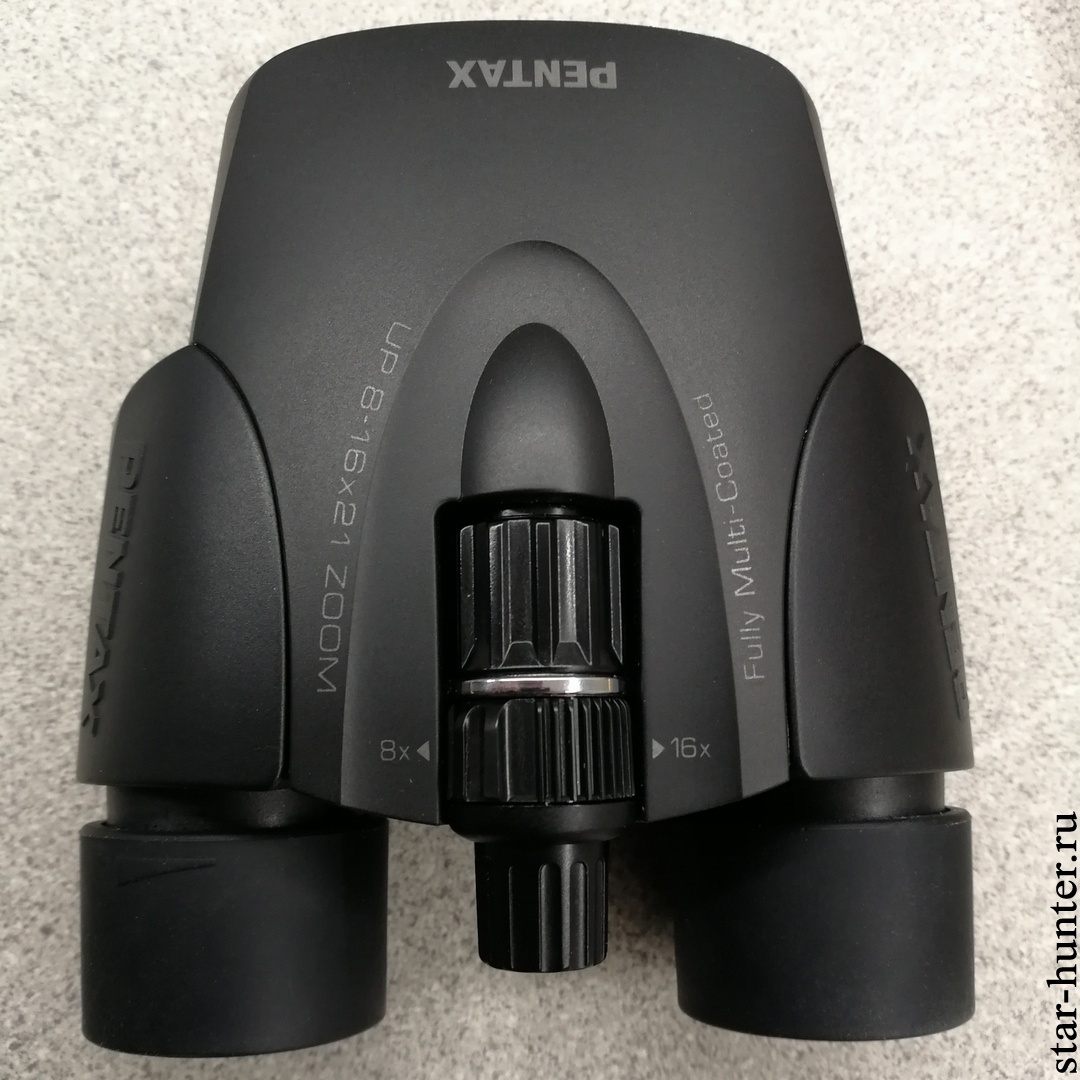
I liked the mechanics – both the work of the adjusting drums and the change in the interpupillary distance.
Optics
The binoculars have a formula of 8-16×21, that is, the manufacturer claims a variable magnification of 8-16x and an aperture (lens diameter) of 21 mm.
In front are two-lens lenses. Measured diameter 21.75 ± 0.1 mm, recessed by about 11 mm relative to the front of the binoculars, green coating.
Next is a block of prisms – green coating in the left channel, in the right channel the glare from the prism is bright colorless.
Closer to the eyepieces is the zoom mechanism and eyepieces (green coating). All optical surfaces adjoining air, except for the prism(s) in the right channel, are coated.
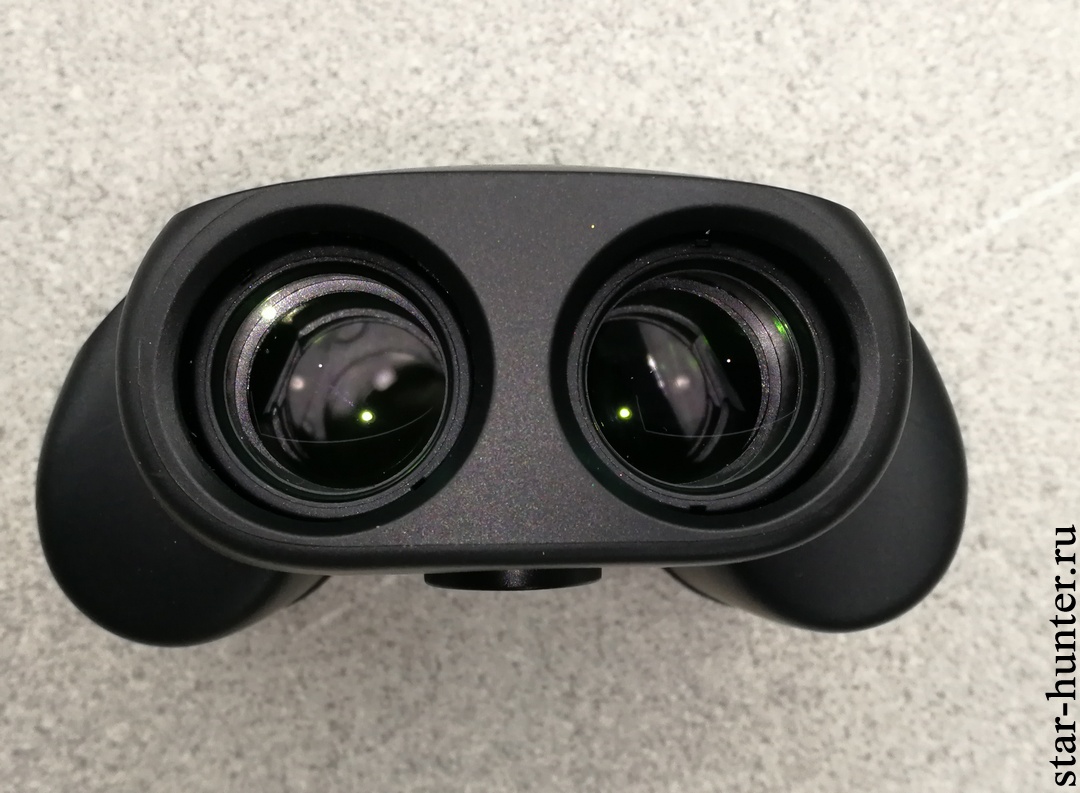
A “flashlight test” was also carried out: the binoculars were focused at infinity, a flashlight was shining from the side of the eyepiece, a light circle was projected from the side of the lens, the diameter of which was measured using a caliper or a camera matrix (in specific testing – Canon 5D Mark II). This is just the working aperture. The flashlight test allows you to determine the hidden aperture or undercutting of the aperture by internal elements. The aperture measured in this way was 21.8 mm. Moreover, the aperture is partially cut off from one edge by prismatic blocks.
The exit pupil is a light circle at the exit from the eyepiece at a certain distance from the eye lens, in fact, this is an image of the lens (aperture). Unfortunately, due to the small eye relief, it was not possible to measure the size of the exit pupil with the camera, so we will determine it indirectly by measuring the magnification.
To measure the magnification, two image of a ground object were taken – through binoculars and without binoculars. Then the size in pixels of some object in the field of view on each of the images is determined, one is divided by the other and we get the multiplicity. For PENTAX UP 8-16×21, the magnification measured in this way was 8 and 16x (+-0.2x), which fully corresponds to the declared one. The exit pupil is 21.8\8=2.73 and 21.8\16=1.36 mm.
There are flares near the exit pupil that occur at an angular distance of less than 16 degrees from a bright light source.
The eye lenses are convex, 12.4 mm in diameter, recessed by 5.2 mm relative to the folded eyecup. The measured field of view was 38.6° (at 8x) 44.1° (at 16x) . Measured eye relief from the eye lens is approximately 12 mm (at 8x) and 9 mm (at 16x), ± 1 mm. The glasses show the entire field of view at 8x, but literally at the limit. At 16x the eye relief is too small for viewing with glasses.
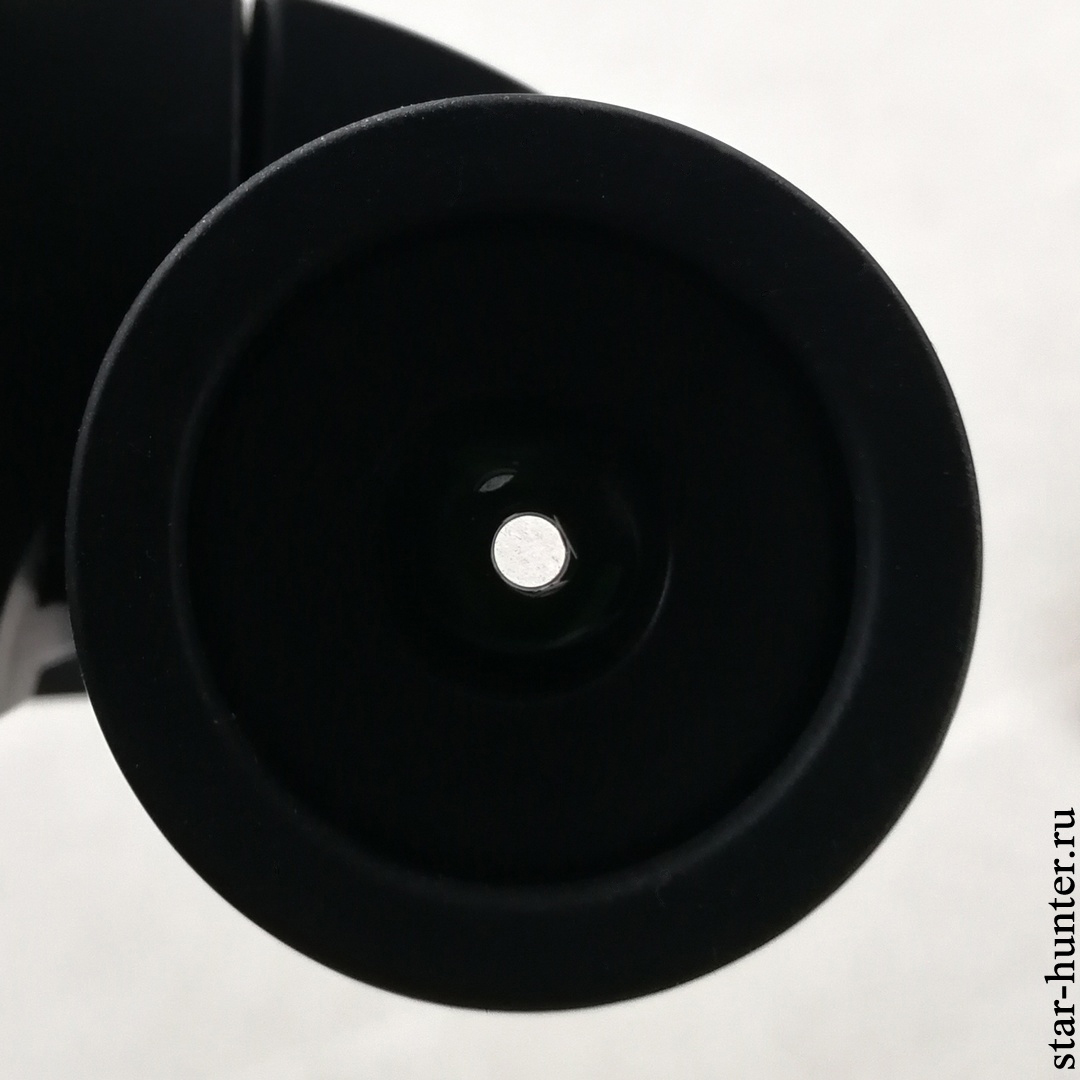
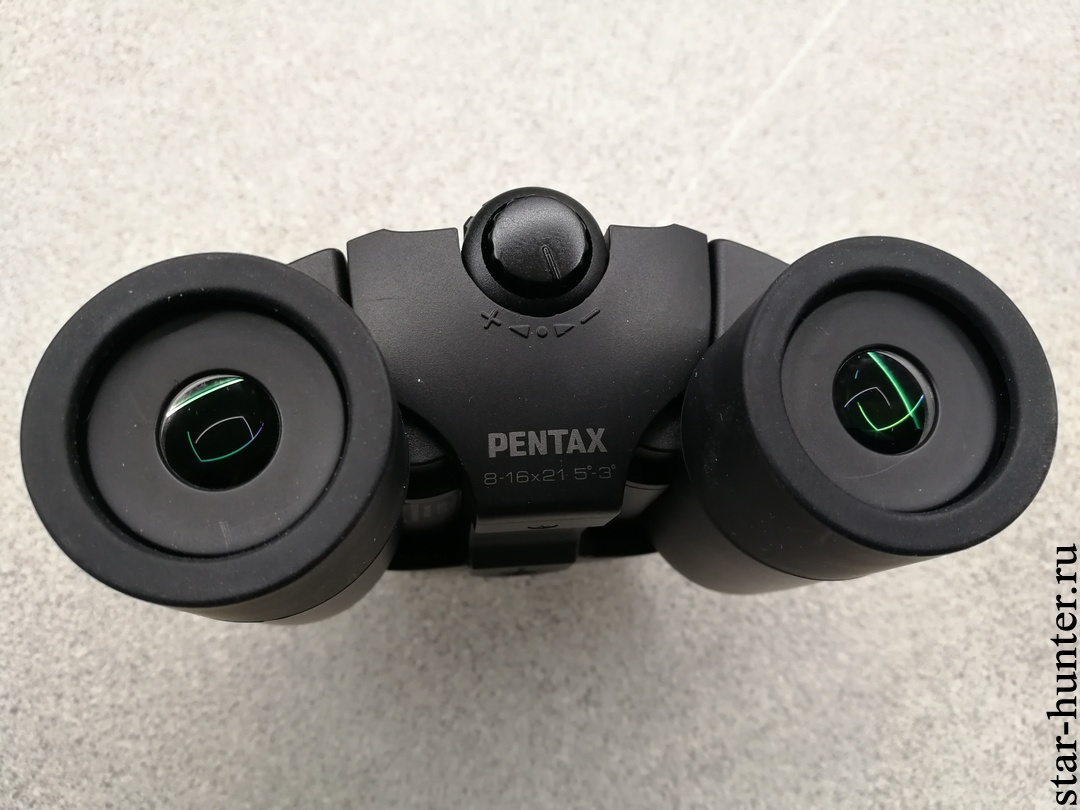

Image
Daytime testing of the PENTAX UP 8-16×21 binoculars showed that at 8x about 50-60% of the field of view (from the center) are clear, then degradation in sharpness due to astigmatism is noticeable. Mixed distortion – barrel-shaped in the center, pillow-shaped towards the edge. The edge of the diaphragm is clear, without coloration.
At 16x, about 40-50% of the field of view is clear, then degradation in sharpness due to astigmatism. Pillow-shaped distortion. The edge of the aperture is blurry.
Chromatism on the axis is imperceptible, along the field there is lateral chromatism (8x less, 16x more noticeable).
On-axis sharpness is good throughout the magnification range.
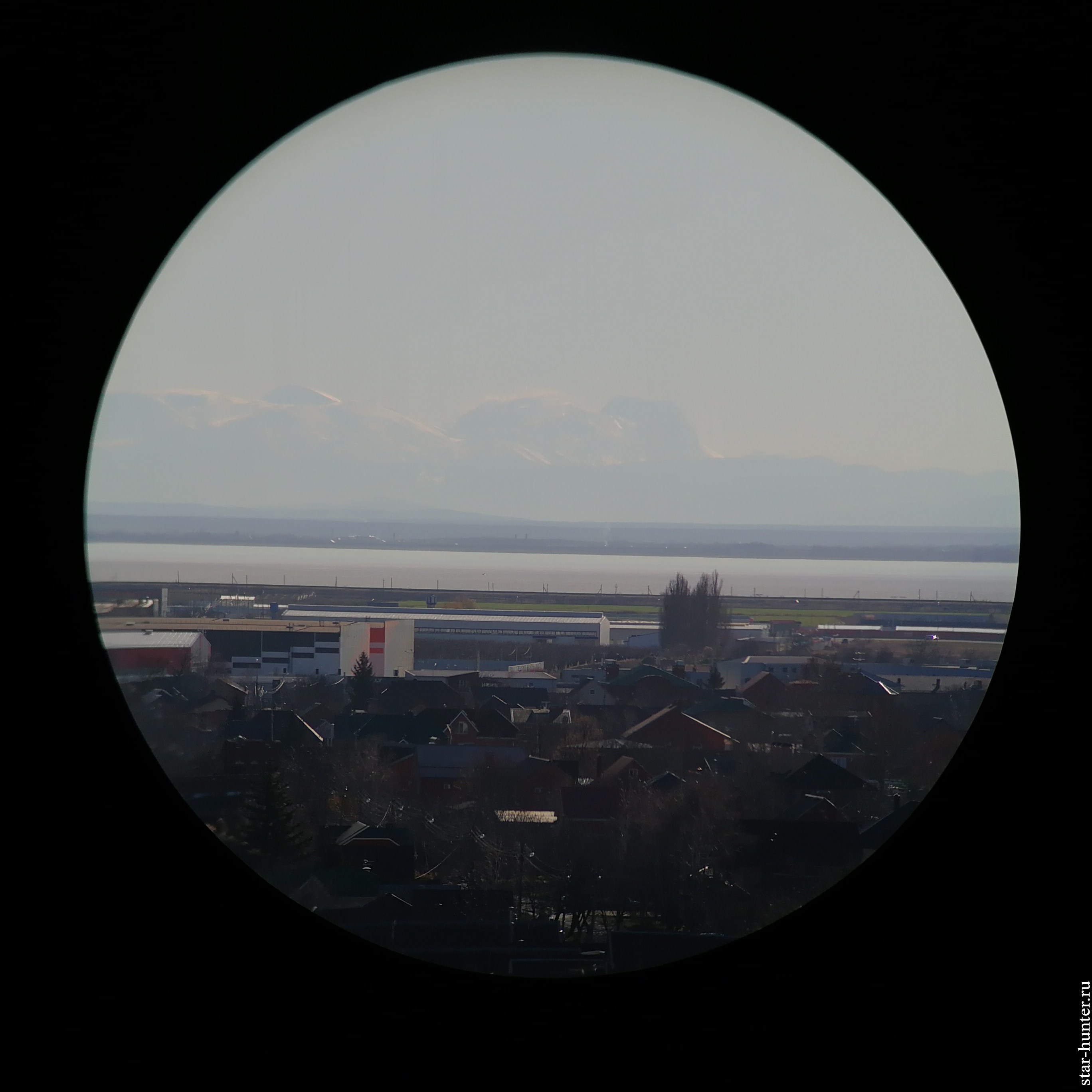
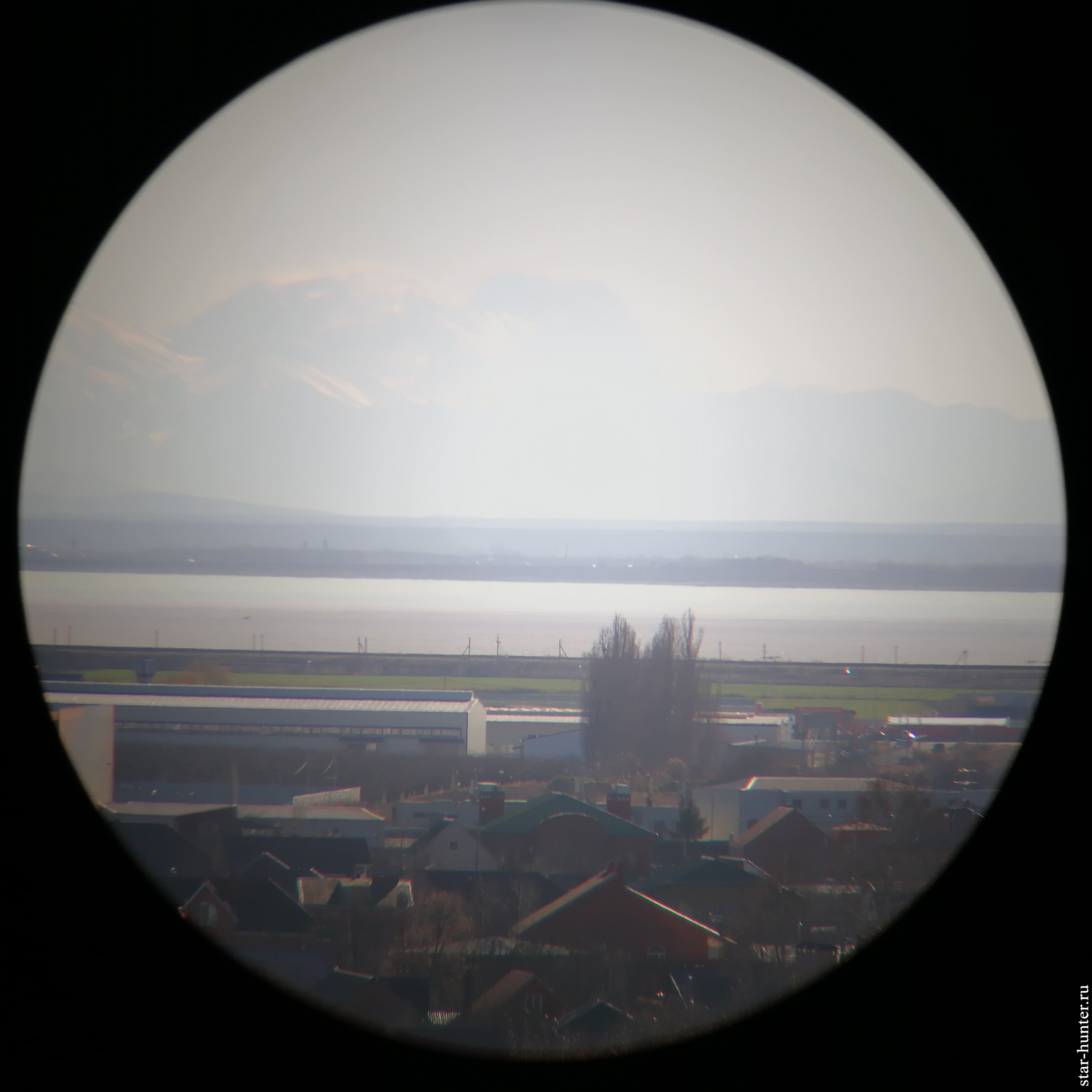
Due to the fact that the stereo base of the binoculars is less than the interpupillary distance, the 3D effect is very weak when observing distant objects – the image is simply “flat”, but for observing close objects (less than 3 meters) this is even a plus. A small doubling of the field diaphragm is also preserved when objects are observed at infinity.
There is a noticeable color distortion (pink tint).
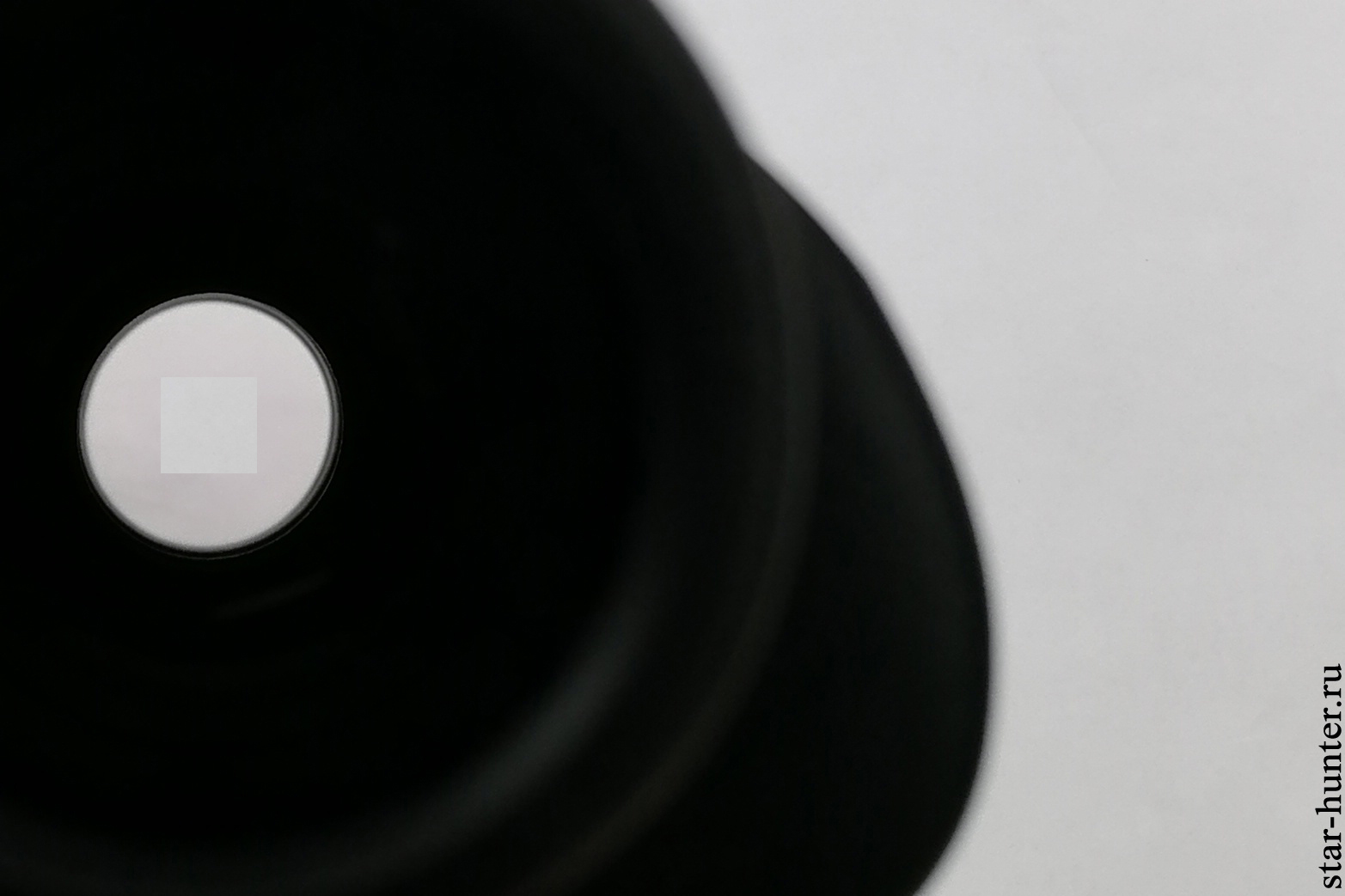
The collimation of the binoculars is excellent, the eyes do not get tired even during long-term observations.
When tested at night at 8x magnification, the stars at the edge of the field of view look like arcs (parallel to the edge of the field of view), and with a slight refocusing they turn into “sticks” (from the center to the edge). At 16x, astigmatism increases, when focusing in the center, the stars look like “sticks” (from center to edge).
The PENTAX UP 8-16×21 binoculars are not suitable for evening and night observations, as the exit pupil is too small and the image is too dark (especially at 16x). For astronomy, binoculars are of little use, except for admiring lunar craters and seas at 16x. On a sunny day, the brightness of the picture is more than enough.
Due to good ergonomics, hand tremor is not particularly felt even at 16x, however, for long-term observations at the maximum magnification, it is better to use a tripod.
Summary
+ Lightweight
+ Compact
+ Short focusing distance (from 2.7 meters)
+ Good mechanics
+ Excellent collimation
+ Magnification as declared
+ Almost complete optics coating
+ Thread for photo tripod
– Trimming the light beam with prisms
– Glare near the exit pupil
– No coating on one of the prisms
– Color distortion
– Desynchronization of channels (the need for periodic diopter correction).
PENTAX UP 8-16×21 are small and lightweight binoculars for daytime observations. In my opinion, this is a good option for a traveler or for watching sports events, as you can quickly view an object of interest with different magnification. A large range of interpupillary distance adjustment allows both adults and children to use the binoculars.
